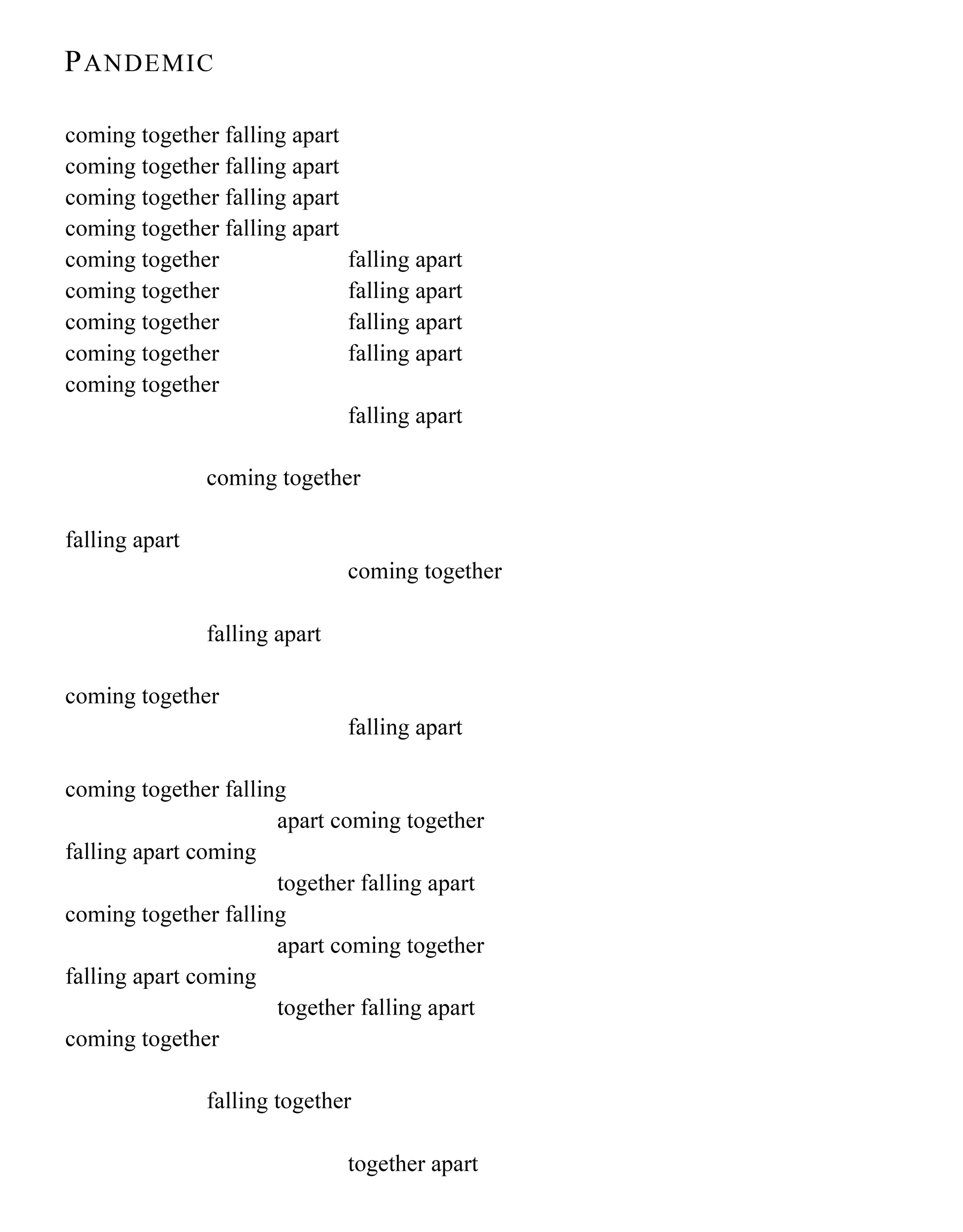In the annals of human experience, pandemics serve as crucibles that test the resilience of societies, the profundity of human connection, and the imperative for collective transcendence. The Bahá’í teachings, with their emphasis on unity, justice, and the interdependence of humanity, offer a poignant framework for understanding and navigating the trials associated with such global crises. A poem inspired by this context can evoke both the somber realities of a pandemic and the uplifting potential that lies within collective response, illuminating various themes inherent in Bahá’í philosophy.
At its core, the Bahá’í teachings underscore the oneness of humanity. This principle asserts that despite superficial differences, all human beings belong to a single race. In the face of a pandemic, this perspective invites a reevaluation of how societies respond to crisis. Readers can expect to encounter reflections on empathy, compassion, and solidarity throughout the thematic landscape of the poem. Lines may express the shared experience of fear and grief, illustrating that distinctions of nationality, class, or belief are rendered insignificant in the face of collective adversity. A recurring refrain may emphasize that “we are one” amidst the chaos, urging a communal response to suffering.
Furthermore, the poem would likely delve into themes of justice, which are central to Bahá’í teachings. The onset of a pandemic often exacerbates pre-existing inequities, highlighting the disparities that exist in healthcare access, economic resilience, and social safety nets. The poem could poignantly illustrate the plight of marginalized communities, capturing the voices of those who suffer disproportionately. Through vivid imagery and poignant metaphors, the poem may advocate for a radical rethinking of societal structures, underscoring the necessity of fostering inclusivity and ensuring that responses to the pandemic are informed by justice and equity.
Another critical element in the poem would be the role of divine guidance and human agency. The Bahá’í understanding of the relationship between the divine and humanity posits that while individuals are endowed with free will, they are also guided by a higher moral compass. The poem may evoke the imagery of light, signaling divine illumination amidst the darkness of uncertainty. Readers can expect to confront existential inquiries about faith, resilience, and the search for meaning during tumultuous times. Through these reflections, the poem serves as both a meditation on human suffering and an exploration of hope, encouraging readers to contemplate their own responses to crisis with a sense of purpose.
Moreover, the concept of ‘the betterment of the world’ is central to Bahá’í teachings and would likely manifest in varying dimensions within the poem. Inspired by the belief that humanity is capable of progress, the poem could articulate a vision for a post-pandemic world that prioritizes cooperation over competition, sustainability over exploitation, and peace over conflict. Lines might conjure vivid images of rehabilitation, restoration, and reinvention, illustrating a future where communities emerge united and fortified by their shared tribulations. The aspirational nature of these reflections invites readers to engage in dialogues about collective responsibility and the potential for collaborative efforts that transcend boundaries.
The aesthetic dimensions of the poem are also critical to its impact. Incorporating elements of rhythm, meter, and rhyme could enrich the reading experience, allowing the emotional weight of the themes to resonate more profoundly with the audience. The use of evocative language and striking metaphors would enhance the appeal, forging connections between the readers’ lived experiences and the universal truths expressed within the lines. The interplay of short, impactful phrases and longer contemplative stanzas can create a dynamic flow, engaging audiences in contemplation and reflection.
Interspersed within the poem could be historical allusions and references to the teachings of Abdu’l-Bahá and Bahá’u’lláh, illustrating how guidance from these figures can inform contemporary responses to crises. By integrating quotations or brief anecdotes from their writings, the poem can serve as a bridge between historical wisdom and modern challenges. Readers can anticipate a nuanced exploration of how these teachings encourage active participation in alleviating suffering, emphasizing that true dedication to humanity involves not merely abstract ideals but tangible actions that foster recovery and healing.
To encapsulate the essence of Bahá’í teachings is to recognize their multifaceted relevance to the challenges posed by a pandemic. The poem crafted within this paradigm not only articulates the sorrows and trials of contemporary existence but also elevates the discourse to encompass hope, resilience, and divine potential. Ultimately, readers are invited not merely to witness these reflections but to embody them in their own lives, transforming the collective experience of hardship into a catalyst for renewal and unity.
As the world continues to grapple with the aftermath of a pandemic and the uncertainties that lie ahead, the teachings outlined in the poem remind us of our shared humanity, the necessity for justice, and the indomitable spirit of collective action. In transcending self-interest and embracing the oneness of our existence, we carve out pathways to a brighter, more equitable future, embodying the heart of the Bahá’í vision for a better world.
